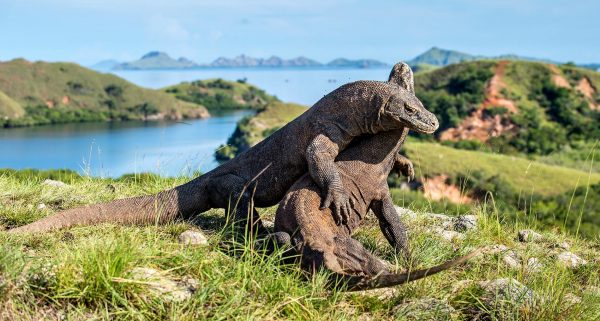SINGAPORE, 23 July 2019: In the bay, a cruise ship at anchor overshadows the skyline as passengers transfer to tenders for the short sail to Komodo Island.
Within the hour, around 1,000 passengers will transfer from ship to shore to visit the famous Komodo dragons, the highlight of a sea voyage that explores the archipelagos that are the tourism jewels of Indonesia.
But the Komodo dragons will see the last of the tourists by the end of the year as the Indonesian government makes good on its threat to close Komodo island in 2020.

Last year, 121,409 foreigners visited the island, and tourist earnings topped USD2.4 million.
In the wake of the tourism exit, communities that have lived on the island for generations will resettle on other islands. For them, it could spell financial ruin, and they feel hard done by; forced to vacate their island home. They view themselves as curators rather than exploiters who shared the national park island living peacefully side-by-side with the dragons in the national park. Their argument fell on deaf ears.
The national park remit is to turn back the clock and introduce a Jurassic Park style environment and ultimately an attraction only wealthy tourists can afford to visit.
A rigorous rehabilitation of Komodo Island will turn it into a sanctuary for the dragons without the presence of humans. If after a year the island reopens access will be restricted to travellers prepared to pay USD500 for a day trip to view the Komodo dragons.
In the meantime, cruise ships will anchor off the lesser-known Rinca island also part of the national park that is home to a smaller population of Komodo dragons.
It’s the new norm that faces tourism, especially the kind that relies entirely on the delivery of distinct natural beauty, wildlife or culture to be successful.
If we are not prepared to implement carrying capacity guidelines, today’s famed attractions could face the fall of the hammer. Sites declared closed for rehabilitation.
2018 gave us some dramatic closures that caused consternation for local tourism players. Thailand ordered the closure of Maya Bay made famous by the DiCaprio movie ‘The Beach’ in 2000. At the height of its popularity, 5,000 day trippers day tramped the life out of the bay’s beauty, destroying coral and marine life.
Maya Bay remains closed until at least 2021 despite loud protests from the local tourism trade, and according to marine experts, it is making a miraculous recovery.
The Philippines’ Boracay island closed for six months (April to October 2018) for rehabilitation after the country president declared the beach paradise a stinking cesspool. Following major work on roads and a wastewater system, Boracay is now in recovery mode, but without its beach parties and other excesses that caused the dramatic decline in the first place. Now hotel development is strictly controlled, and tourists must stay in registered hotels. Planned casinos and mega-resorts are currently on the back burner.
From sea level to the highest point on the earth, the Everest base camp in Tibet, closed to tourists last February. The starting point for the final ascent to the Everest peak, the base camp suffocated under a mountain of trash. Climbers and tourists came to this fantastic spot on the globe to enjoy the passion of adventure and mountaineering but they left all their garbage behind. In retrospect, climbing fees should include the cost of removing all of an expedition’s trash.
The cardinal rule, especially when visiting a place of outstanding natural beauty or culture, should be we leave nothing behind except our footprints. But that is only one part of the challenge. The other is to work out when a destination can no longer cope with footprints. That requires considerably more thought than what we currently employ when we trot out the popular fix-it phrase “carrying capacity”.







No need, just watch the new Cabinet at a meeting.
It would be an opportunity for Thailand tourism marketers to convince komodo watching in Thailand and watch the monitor lizards at Lumpini Park in Bangkok instead. Lumpini Park seems like monitor lizards sanctuary.